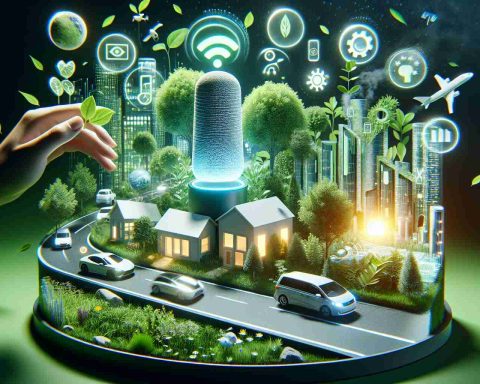As artificial intelligence continues to advance, the transformation of the energy sector presents new challenges and opportunities. The rapid closure of coal-fired power plants and the slow integration of renewable energy sources are leading to potential supply disruptions. Energy leaders are now focusing on enhancing reliability amidst these changes.
In response to the increasing demands from data center developers, Dominion Energy’s CEO, Robert Blue, notes the exponential growth in data centers and the need for accelerated capacity expansion plans. The forecasted increase in electricity demand by nearly 40% by 2039, alongside the retirement of 21% of current capacity by 2030, highlights the urgency for infrastructure upgrades.
While there are numerous renewable energy projects in the pipeline, their implementation has been sluggish. Utility companies like American Electric Power are anticipating a significant increase in data center needs by the end of the decade, accounting for a substantial portion of their peak load.
The development of infrastructure poses significant challenges, with the planning and construction of transmission lines potentially taking up to a decade, according to industry experts. To address this, some tech firms are seeking direct connections to large energy sources such as nuclear power plants.
Industry leaders emphasize the critical role of meeting the growing demand from data centers for the American economy. As Petter Skantze of NextEra Energy Resources points out, the stakes are high, and navigating this new landscape requires strategic planning and execution.
The Future of Energy Infrastructure: Addressing Key Questions and Challenges
The evolving landscape of the energy sector brings forth a myriad of questions and challenges that must be addressed to ensure a sustainable and reliable energy infrastructure for the future. Let’s delve deeper into some of the crucial aspects surrounding the future of energy infrastructure.
1. What innovations are shaping the future of energy infrastructure?
In addition to the advancements in artificial intelligence, innovations such as blockchain technology and Internet of Things (IoT) devices are playing an increasingly important role in optimizing energy systems. These technologies enable better monitoring, management, and utilization of energy resources, paving the way for a more efficient and resilient energy infrastructure.
2. How can we accelerate the adoption of renewable energy sources?
While there is a growing number of renewable energy projects, challenges remain in integrating these sources into the existing grid effectively. Implementing smart grid solutions, energy storage technologies, and incentivizing renewable energy investments are key strategies to expedite the transition to a cleaner energy mix.
3. What are the advantages and disadvantages of decentralized energy systems?
Decentralized energy systems, such as microgrids and distributed generation, offer benefits like increased resiliency, reduced transmission losses, and localized energy production. However, scalability, regulatory hurdles, and coordination issues pose challenges to widespread adoption of decentralized energy systems.
4. How can we ensure energy infrastructure resilience in the face of climate change?
With the increasing frequency and intensity of extreme weather events, ensuring the resilience of energy infrastructure is paramount. Investing in climate-resilient infrastructure, improving grid flexibility, and implementing robust emergency response plans are essential to mitigate the impacts of climate change on energy systems.
5. What role do cybersecurity measures play in safeguarding energy infrastructure?
As energy systems become more interconnected and digitized, the risk of cyber threats to critical infrastructure escalates. Implementing robust cybersecurity measures, conducting regular vulnerability assessments, and fostering information sharing among industry stakeholders are crucial in safeguarding energy infrastructure against cyber attacks.
Addressing these key questions and challenges is imperative to shaping a sustainable, reliable, and resilient energy infrastructure for the future. Industry stakeholders, policymakers, and innovators must collaborate to drive meaningful progress towards a more sustainable energy ecosystem.
For further insights on energy infrastructure innovations and challenges, visit International Energy Agency for comprehensive reports and analysis in the energy sector.

















